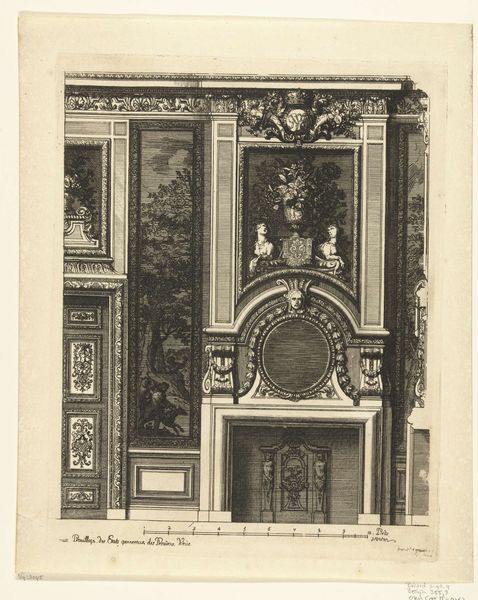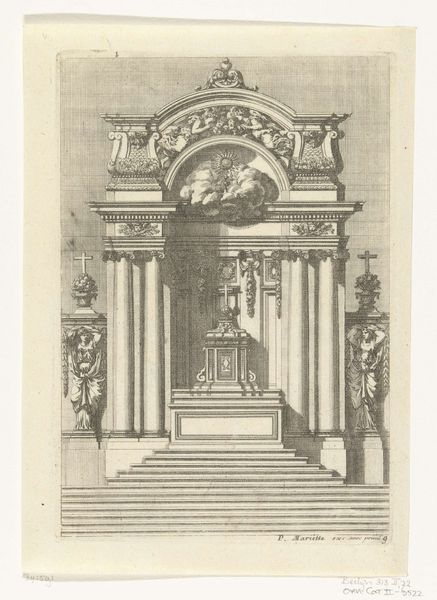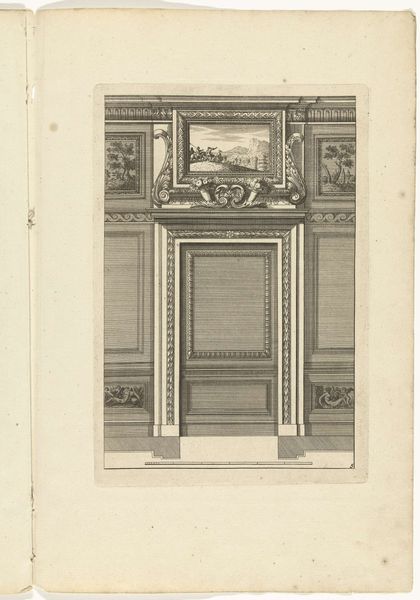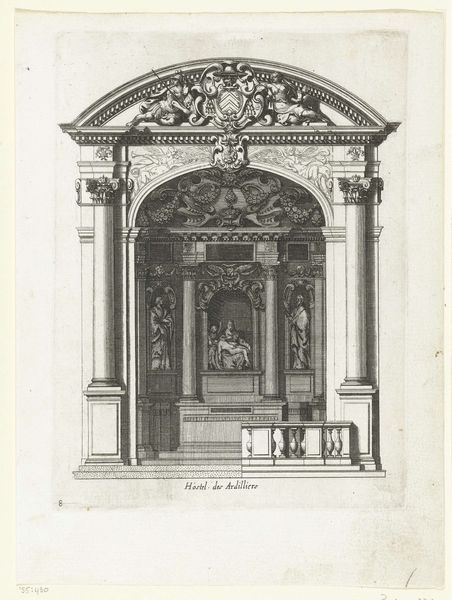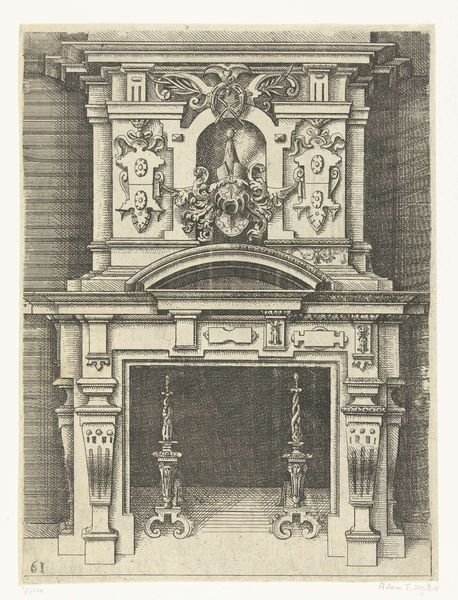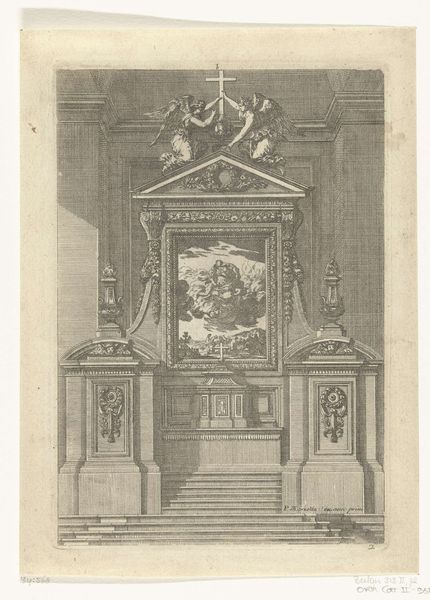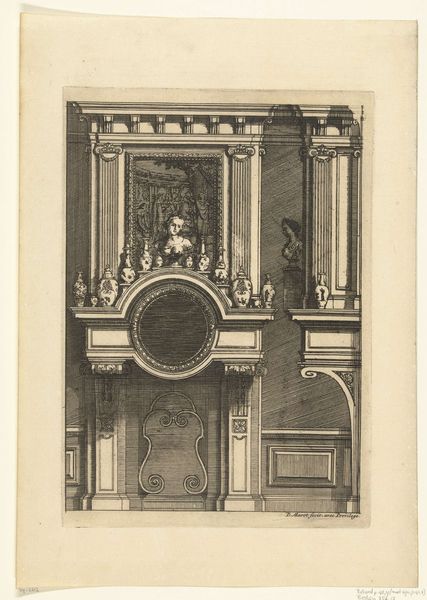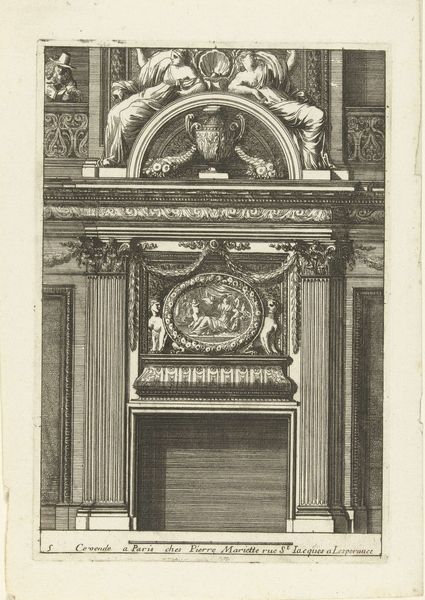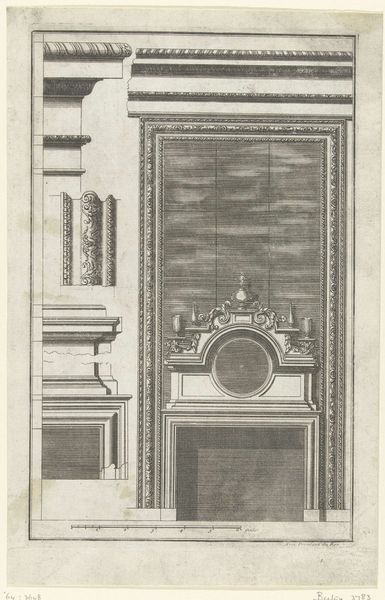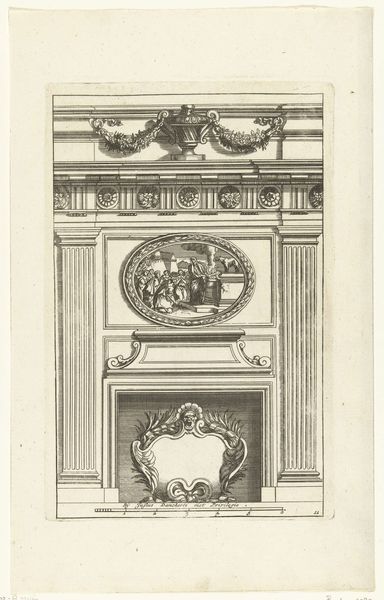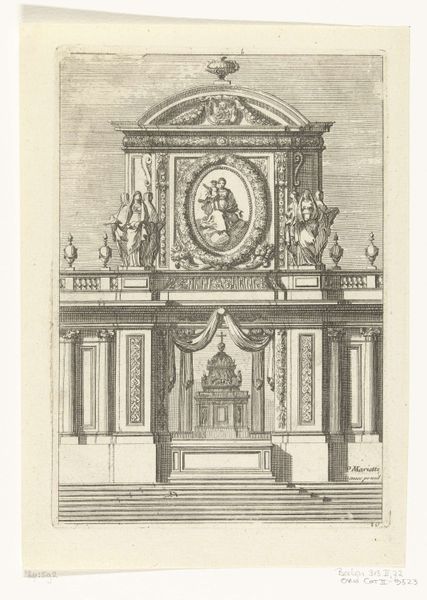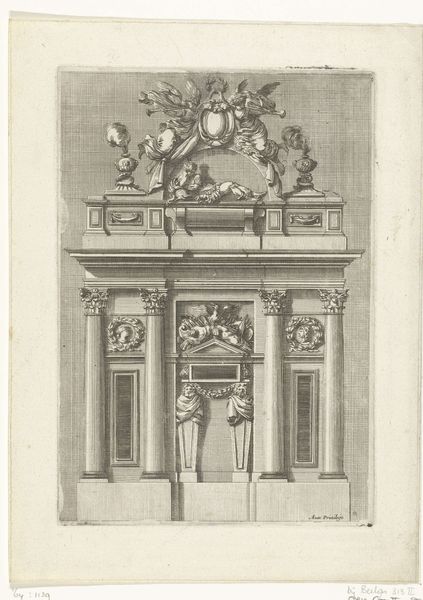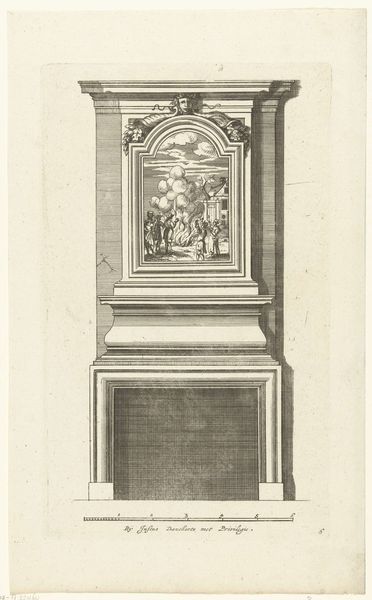
drawing, engraving, architecture
#
architectural sketch
#
drawing
#
baroque
#
perspective
#
form
#
line
#
engraving
#
architecture
Dimensions: height 207 mm, width 145 mm
Copyright: Rijks Museum: Open Domain
Curator: Let’s consider this engraving now, "Deuropening met uitzicht op tweede deur," or "Opening with a view of a second door" by Franz Ertinger, dating from before 1678, currently held in the Rijksmuseum. It is an architectural sketch which represents, indeed, an opening onto another opening. Editor: My first impression is how strikingly austere it appears for a Baroque piece! All those rigorous straight lines create a really severe sense of perspective and space. Curator: The architectural components are not merely structural; they carry symbolic weight. The double doorway motif can signify transitions and choices. Think of thresholds between physical spaces representing broader shifts in status or destiny in Baroque art. Editor: I am really drawn to the texture! See how Ertinger uses linear perspective to convey the recession into the depicted scene beyond, that outdoor terrace. There's real depth suggested by those varied line weights, especially defining the columns, but, there is, simultaneously, a flattening through a high-contrast monochrome palette. Curator: The arrangement is almost like looking through a cultural lens, viewing a snapshot from the past but filtered through symbolic architecture, calling on visual references the public would likely grasp at the time. It’s fascinating how visual themes carry historical narratives. Editor: The mirrored framing grabs my attention. It really accentuates this push-and-pull between flatness and depth, surface and illusion. I keep asking myself what is being included in this picture, and perhaps more importantly what's excluded and why. Curator: Indeed. The architectural sketch invites an exploration not only of space but also of power and visual traditions. The visual repetition acts like an echo that binds past, present, and anticipated futures together. Editor: For me, its interest comes in exploring that central tension - the architectural volume presented as art - both at the same time, that, I think, will keep viewers returning to the piece for further explorations.
Comments
No comments
Be the first to comment and join the conversation on the ultimate creative platform.
